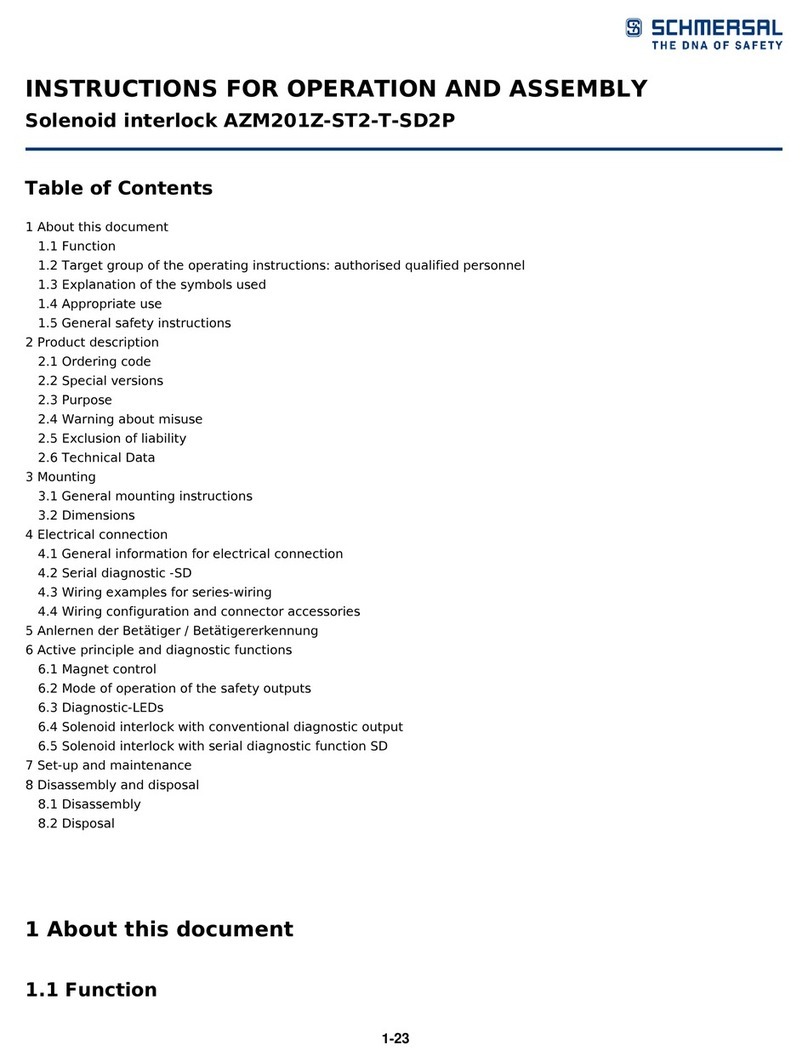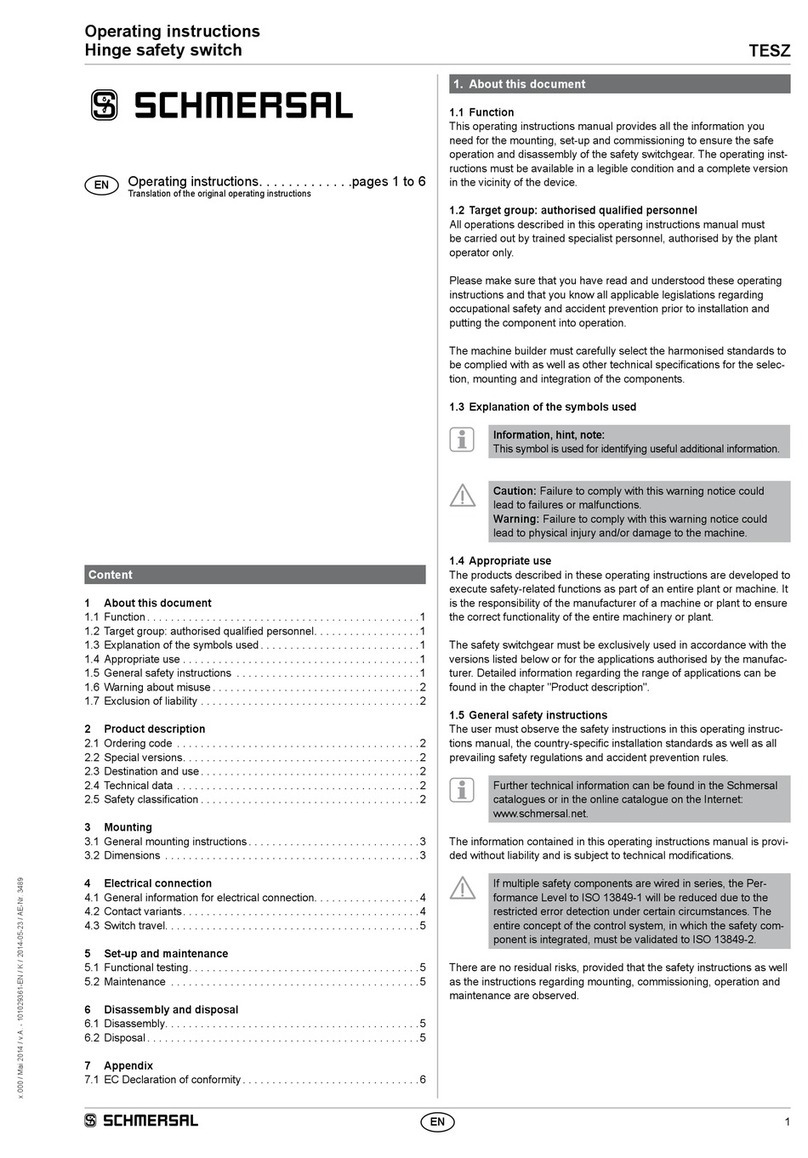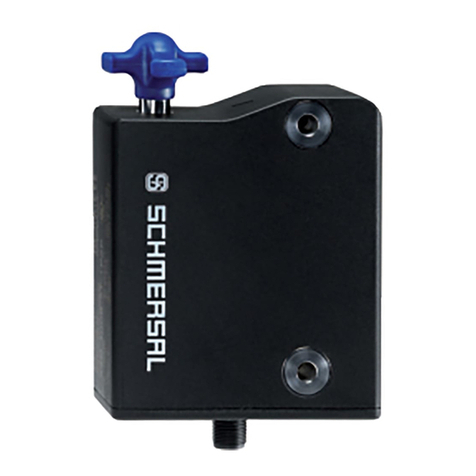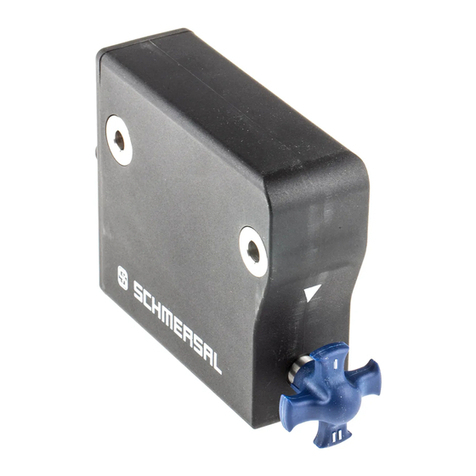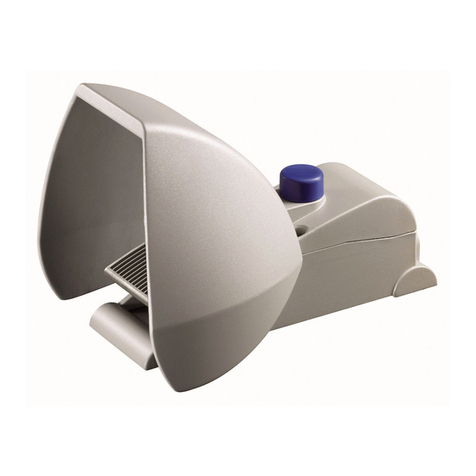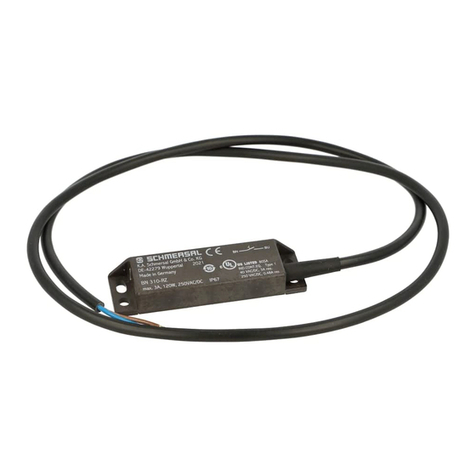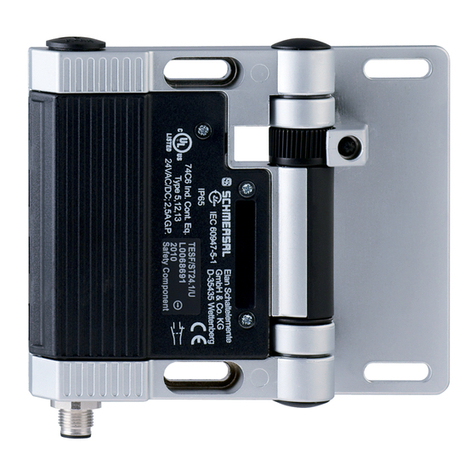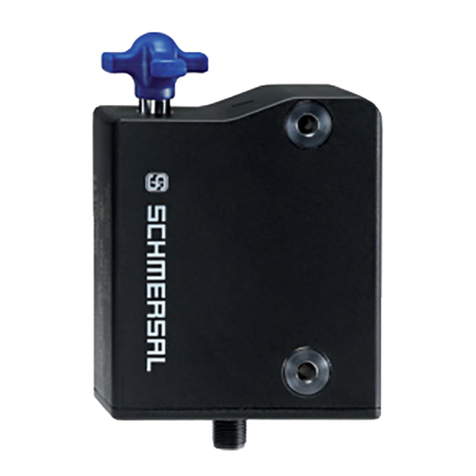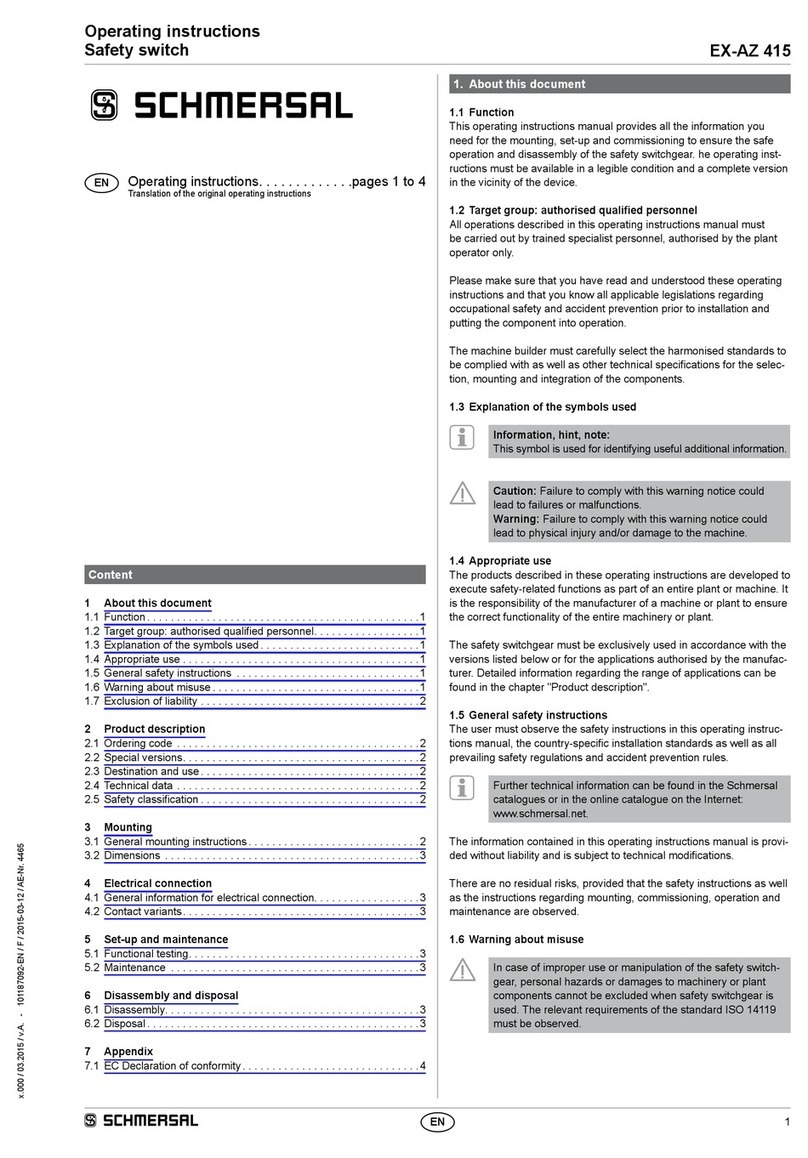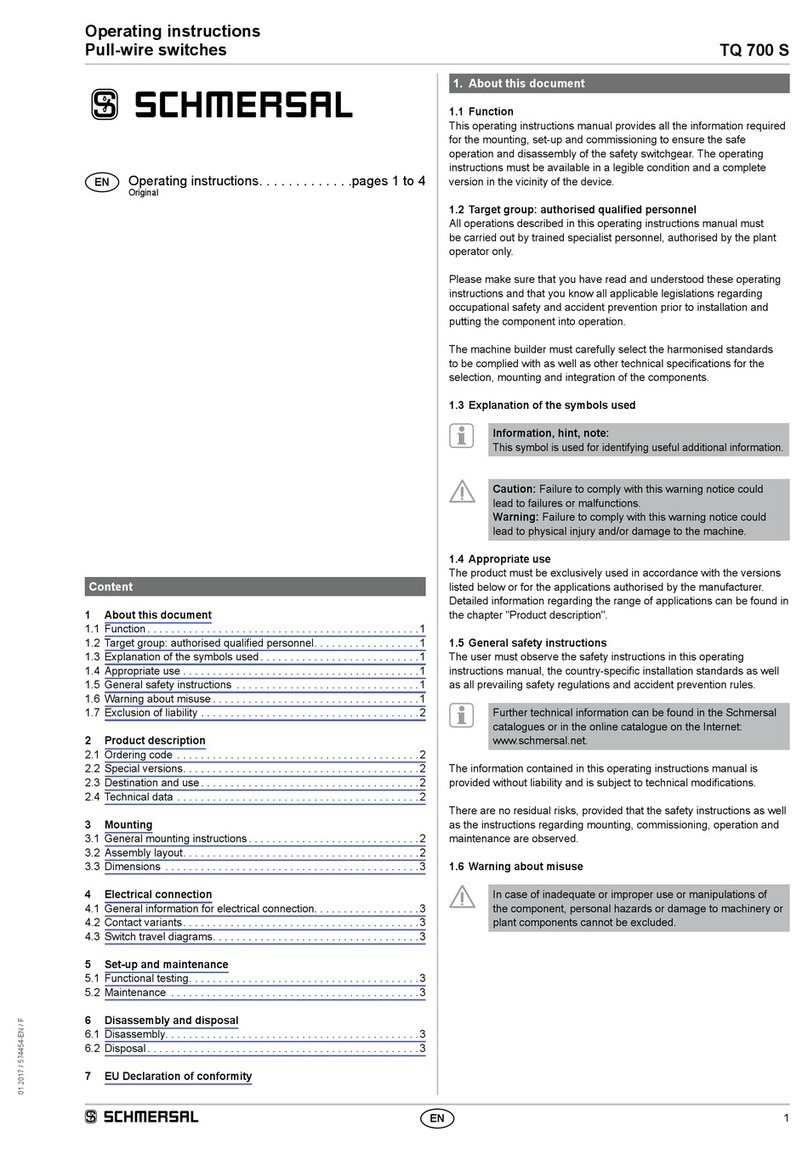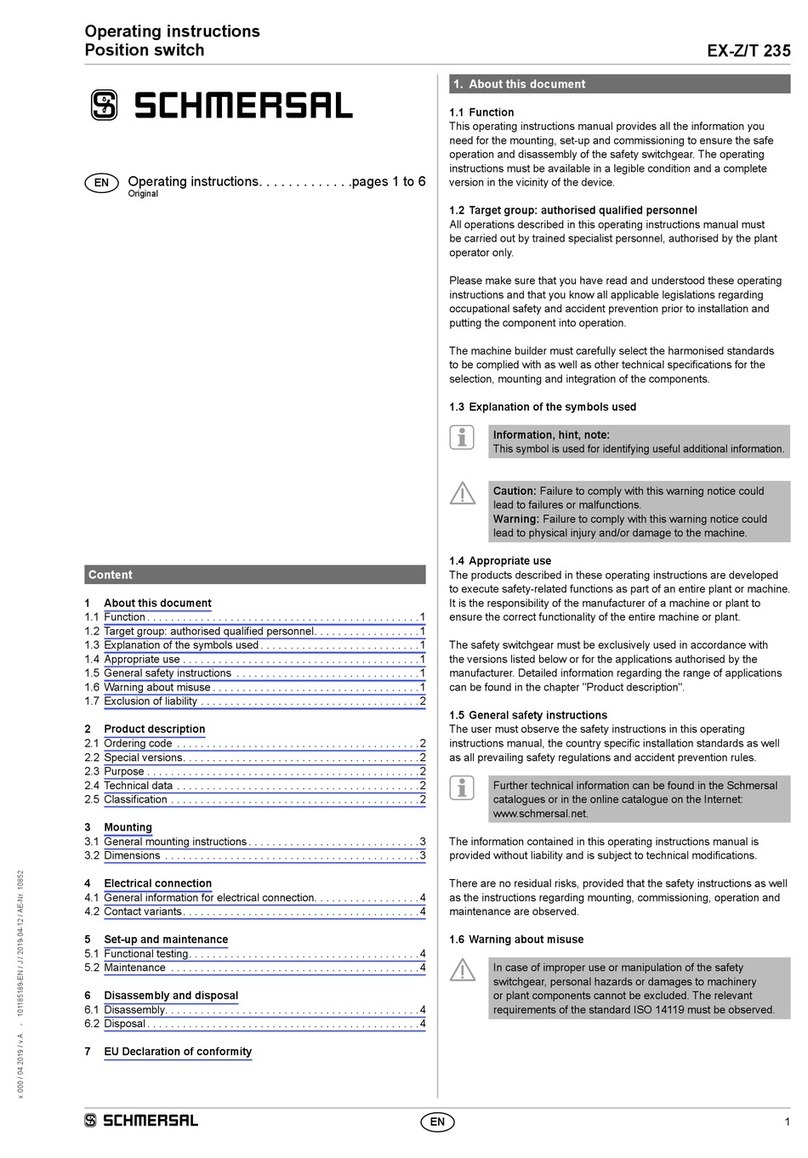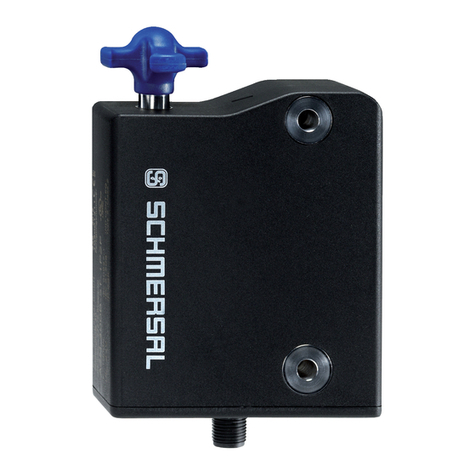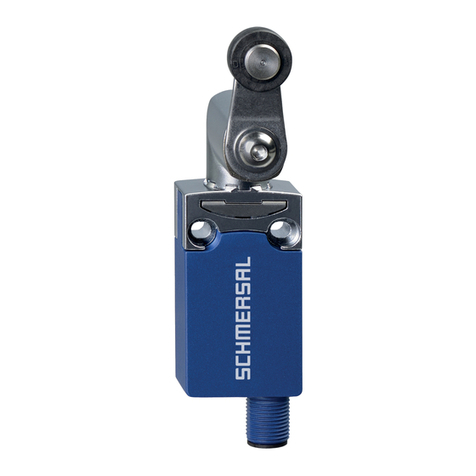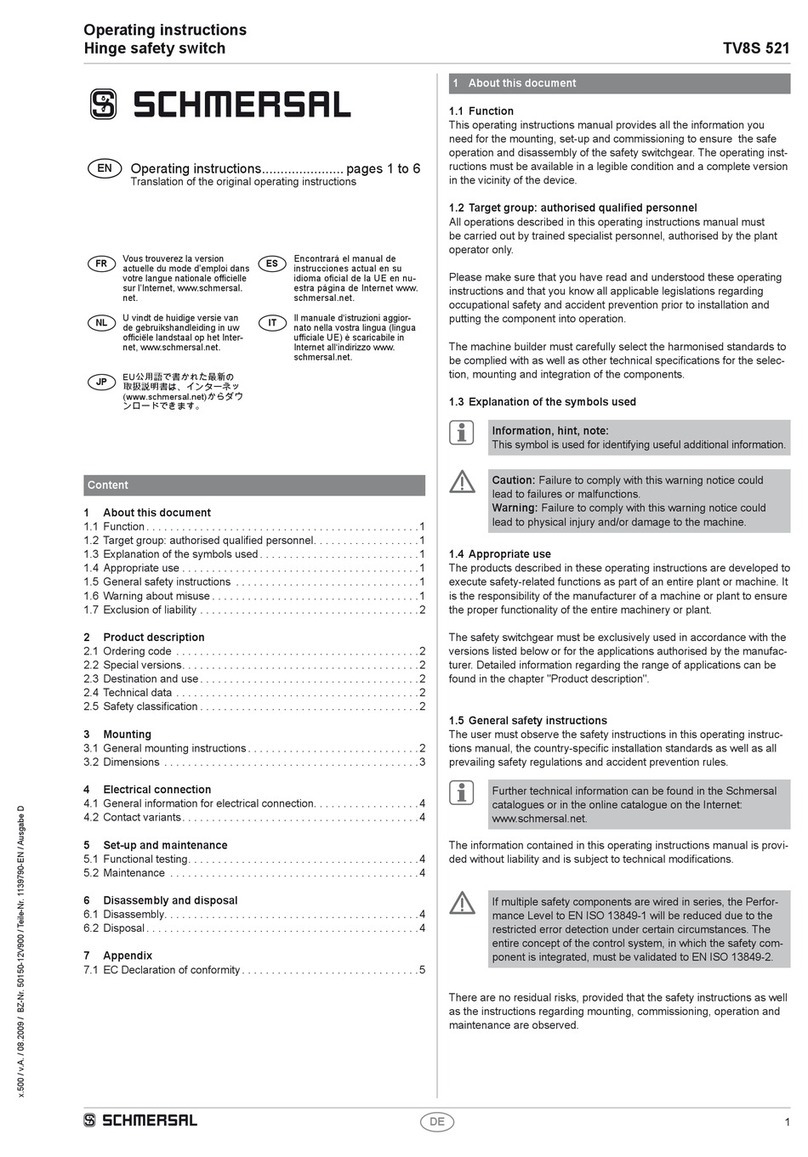
2
Operating instructions
Safety switch AZ 415-33ZPK
EN
1.6 Warning about misuse
In case of improper use or manipulation of the safety
switchgear, personal hazards or damages to machinery
or plant components cannot be excluded. The relevant
requirements of the standard EN 1088 must be observed.
1.7 Exclusion of liability
We shall accept no liability for damages and malfunctions resulting from
defective mounting or failure to comply with this operating instructions
manual. The manufacturer shall accept no liability for damages
resulting from the use of unauthorised spare parts or accessories.
For safety reasons, invasive work on the device as well as arbitrary
repairs, conversions and modifications to the device are strictly
forbidden; the manufacturer shall accept no liability for damages
resulting from such invasive work, arbitrary repairs, conversions and/or
modifications to the device.
2. Product description
2.1 Ordering code
This operating instructions manual applies to the following types:
AZ 415-33ZPK-
➀
No. Option Description
➀
1637 Gold-plated contacts
Only if the information described in this operating instructions
manual are realised correctly, the safety function and therefore
the compliance with the Machinery Directive is maintained.
2.2 Special versions
For special versions, which are not listed in the order code below 2.1,
these specifications apply accordingly, provided that they correspond to
the standard version.
2.3 Purpose
Safety switches with separate actuators are suitable for movable safety
guards, which need to be closed to ensure the necessary operational
security.
The safety switches are used for applications, in which the hazardous
situation is terminated without delay when the safety guard is opened.
Operating principle
By closing the safety guard, switch insert S1 and S3 are released and
switch insert S2 actuated (differentiated operating principle). When the
actuator is fully inserted, the safety guard is not subject to any ejection
force.
When the safety guard is opened, the NC contacts are positively
opened and the NO contacts are closed.
The user must evaluate and design the safety chain in
accordance with the relevant standards and on the required
safety level.
2.4 Technical data
Standards: IEC/EN 60947-5-1, BG-GS-ET-15
Enclosure: light-alloy die-cast, enamel finish
Protection class: IP 67 to IEC/EN 60529 / DIN VDE 0470-1
Contact material: Silver
Contact type: Change-over with double break Zb,
galvanically separated contact bridges
Switching system:
A
IEC 60947-5-1; slow action,
NC contact with positive break
Connection: screw terminals
Cable type: solid and stranded wire
Cable section: 0.75 … 1.5 mm²
(incl. conductor ferrules)
Cable entry: 2 × M20 × 1.5
Uimp: 4 kV
Ui: 250 V
Ithe:6 A
Required short-circuit current: 1000 A
Utilisation category: AC-15, DC-13
le/Ue:4 A / 230 VAC
4 A / 24 VDC
Max. fuse rating: 6 A gG D-fuse
Positive break travel: 4.5 mm
Positive break force: min. 15 N
(depending on the setting of the ball latch)
Ambient temperature: −25 °C … +80 °C
Latching force: 80 … 400 N (adjustable)
Mechanical life: > 106operations
Actuating speed: max. 0.2 m/s
Max. switching frequency: 2000/h
2.5 Safety classification
Standards: EN ISO 13849-1
B10D (NC contact): 2,000,000
B10D (NO contact) at 10% ohmic contact load: 1,000,000
Service life: 20 years
TF
D
10Dopop
op
n
(Specifications can vary depending on the application-specific
parameters hop, dop, tcycle as well as the load.)
3. Mounting
3.1 General mounting instructions
The mounting holes are accessible after removal of the cover.
The enclosure must not be used as an end stop. Any mounting position.
The mounting position however must be chosen so that the ingress of
dirt and soiling in the used opening is avoided.
Mounting of the actuators: See mounting instructions actuators.
Please observe the remarks of the standards EN ISO 12100,
EN 953 and EN 1088.
